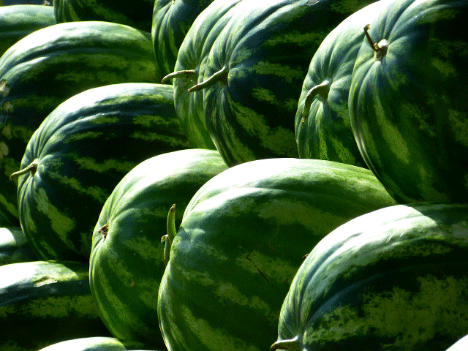In the ever-evolving global watermelon market, Spain stands out not just for its production capabilities but also for its impressive export performance. According to the latest data from Hortoinfo and Comtrade, while Spain ranks fourth in watermelon production, it leads the export market by a significant margin. This article provides a detailed comparison of watermelon production and export activities among Spain and its key competitors: Turkey, Brazil, Senegal, and Egypt.
Production Comparison: Turkey Leads the Way
In 2022, Turkey was the world’s largest watermelon producer, growing 3,394.78 million kilograms on 69,021 hectares. This equates to a yield of 4.92 kilograms per square meter, the highest among the analyzed countries . Turkey’s extensive production is supported by its favorable climate and advanced agricultural techniques, which have allowed it to dominate the global watermelon market.
Following Turkey, Brazil produced 1,920.91 million kilograms of watermelons across 85,729 hectares, yielding 2.23 kilograms per square meter . Brazil’s large-scale production is a result of its vast agricultural land and significant investments in farming infrastructure.
Senegal ranks third with 1,492.62 million kilograms from 89,555 hectares, achieving a yield of 1.67 kilograms per square meter . Despite lower yields compared to Turkey and Brazil, Senegal’s watermelon production is vital for both local consumption and regional exports.
Spain is the fourth-largest producer with 1,164.99 million kilograms harvested from 21,700 hectares, resulting in a yield of 5.37 kilograms per square meter . Spain’s high yield is attributed to advanced cultivation techniques and a favorable growing environment, including both greenhouse and open-field systems.
Egypt, the fifth-largest producer, grew 1,025.29 million kilograms from 31,501 hectares, with a yield of 3.25 kilograms per square meter . Egypt’s production is bolstered by its extensive agricultural areas and suitable climatic conditions for watermelon cultivation.
Export Performance: Spain’s Dominance
Spain leads the global watermelon export market with 680.25 million kilograms exported in 2022, generating €516.97 million in revenue at an average price of €0.76 per kilogram . Spain’s success in the export market is due to its high-quality produce, efficient logistics, and strong trade relationships with European and international markets.
Morocco is the second-largest exporter, with 297.01 million kilograms exported worth €193.93 million at an average price of €0.65 per kilogram . Morocco’s export growth is supported by its increasing production capabilities and expanding market access.
Italy follows as the third-largest exporter, with 260.64 million kilograms worth €158.47 million, at an average price of €0.61 per kilogram . Italy’s position in the market reflects its strong domestic production and growing export opportunities.
Greece ranks fourth, exporting 191.68 million kilograms valued at €72.63 million, with an average price of €0.38 per kilogram . Greece’s export strategy focuses on offering competitively priced watermelons to both regional and global markets.
Turkey is the fifth-largest exporter with 145.87 million kilograms exported, generating €38.48 million in revenue at an average price of €0.26 per kilogram . Turkey’s lower average price compared to its competitors reflects a focus on volume over high-value exports.
Spain’s watermelon industry excels in export performance, demonstrating its strength in delivering high-quality produce to international markets. While Spain ranks lower in overall production compared to countries like Turkey and Brazil, its efficiency in production and export logistics has positioned it as a leader in the global watermelon trade. The contrast between Spain’s high export volumes and the production strengths of its competitors highlights the dynamic nature of the global watermelon market.


































